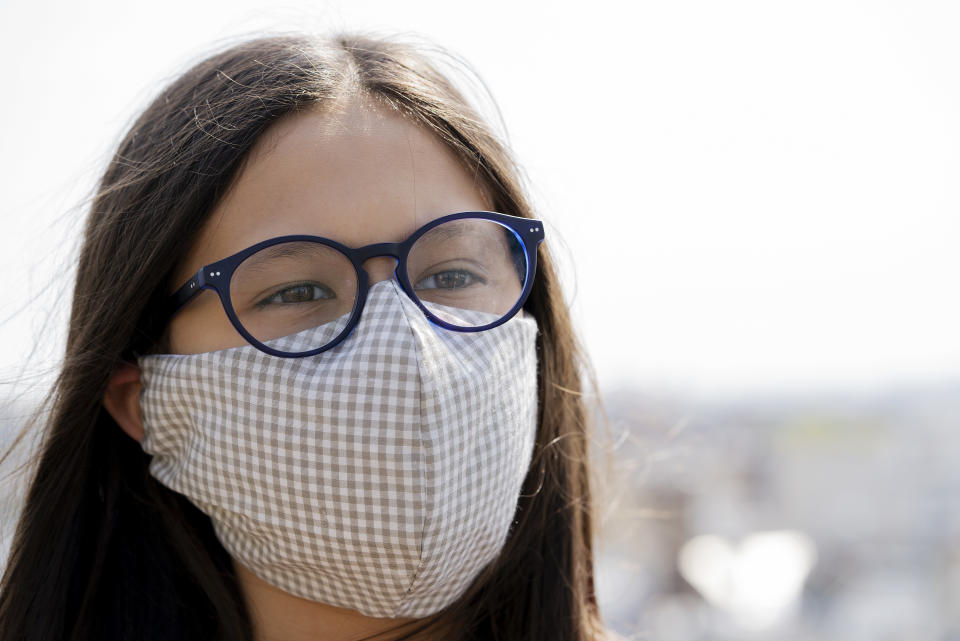Long COVID may be four different syndromes, report suggests

A long COVID patient may be enduring up to four separate syndromes, research suggests.
While most make a full recovery, it is increasingly coming to light that some coronavirus patients face complications after testing negative for the infection.
Dubbed “long COVID”, as many as 60,000 people in the UK alone are battling these complications, which include fatigue, palpitations and even organ damage.
With the infection only identified at the end of 2019, medics cannot fully explain long COVID’s cause.
Read more: What is long COVID?
A report by the UK’s National Institute for Health Research (NIHR) suggests, however, the phenomenon may not be a standalone condition, but instead made up of four syndromes.
After looking at the available evidence, the report’s authors found four identifiable syndromes: post-intensive care; post-viral fatigue; long-term COVID; and permanent organ damage.
Watch: What is long COVID?
It is increasingly emerging that even people with a mild bout of the coronavirus can develop long COVID. Medics have stressed this highlights the importance of adhering to social distancing, face coverings and hand washing, regardless of a person’s age.
While long COVID is poorly understood, some fear the somewhat mysterious complications may be worse than the infection itself for certain individuals.
Doctors have stressed that not fully understanding the condition’s cause makes it tricky to treat.
Read more: Long COVID patient 'not the person she was'
Medics may not be in the dark for long, however. NHS England and NHS Improvement have commissioned the National Institute for Health and Clinical Care Excellence (Nice) – a health watchdog – to develop a treatment guideline for long COVID.
The Scottish Intercollegiate Guidelines Network was given the same instruction by the chief medical officer of Scotland.
The guideline – expected by the end of 2020 – will provide a formal definition of the disease, tips on how to identify symptoms and a layout of the best treatment options to “support the management of the condition across diverse communities”.

To better understand long COVID in the interim, the NIHR team analysed the published evidence, as well as surveying 14 members of a Facebook support group.
They found a wide range of recurring symptoms are occurring both in people hospitalised with the coronavirus and milder cases.
These can affect the airways, brain, heart, kidneys, gut, liver and skin.
With the complications ranging in intensity and duration, long COVID does “not necessarily present in a linear or sequential manner”, wrote the NIHR team.
Such a wide range of symptoms makes diagnoses tricky, causing the authors to wonder if long COVID is in fact a number of different syndromes, which a patient may experience simultaneously.
Read more: Coronavirus circuit breaker would reduce deaths, study suggests
Post-intensive care syndrome describes a range of health problems that remain after a patient returns home following critical illness. A key symptom is often drawn-out muscle weakness from the prolonged period spent bedbound.
Post-viral fatigue syndrome can theoretically occur after fighting off any virus, like flu, but appears to be substantially worse in coronavirus survivors.
Long-term COVID describes the range of symptoms that are increasingly coming to light after a former patient tests negative, with reports ranging from hearing loss to the onset of type 1 diabetes in children.
In severe cases, scans and tests have shown signs of organ damage, which could be permanent.
With long COVID having no set definition, many patients feel their symptoms have not been properly treated, which could have a psychological impact.
This is particularly true among those who were not ill enough to require hospital care for the infection itself and may have never had a coronavirus test.
One who knows the frustration of this all too well is Dr Joanna House, who studies climate change at the University of Bristol.
In March, Dr House and her partner Ash helped an elderly neighbour who had fallen in his home. The couple were unaware the neighbour had the coronavirus, which he unwittingly passed onto them.
Neither required hospital care nor were tested for the coronavirus, however, Dr House has since had her infection confirmed.
Seven months on, both continue to endure breathlessness, fatigue, palpitations and brain fog.
Neither are able to work and rely on their teenage sons – one of whom caught the coronavirus and fully recovered – to cook and clean for them.
“Even on a good day, we only get a few short bursts of energy, and some days it’s a struggle just to go downstairs to make a cup of tea,” said Dr House.
“Without formal recognition of long COVID, and the sort of support that would come with it, we feel in limbo.
“There’s just so much uncertainty around our health, our work, and the future for us and our boys.
“We’ve even written our wills just in case the worst happens.
“This is not a mild illness. What we’re really looking for right now is recognition, for us and others that struggled at home and were not tested, so we can be monitored and the right services are provided to us at the right time.”

Off the back of case studies like this, the NIHR team are calling for a working long COVID diagnosis that is recognised by healthcare professionals, employers and government officials.
“This review highlights the detrimental physical and psychological impact that ongoing COVID is having on many people’s lives, and how healthcare services have at times struggled to manage these new and fluctuating patterns of symptoms and problems,” said report author Dr Elaine Maxwell.
“Our aim is healthcare services and staff will use this review to better understand the experiences patients have to deal with, and provide them with the access to treatment, care and support they need.
“While research is at an early stage, listening to the testimony of people living with the ongoing effects of COVID-19 provides rich insights into where we should focus future research, as well as the services we should be commissioning now.”
Watch: How is coronavirus treated?



